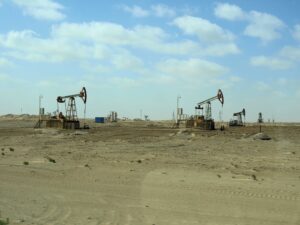Executive Summary
Energy and metals remain the backbone of India’s industrial growth. ONGC continues to offer strong dividends and stable performance, GAIL faces margin pressure but retains infrastructure leadership, Oil India trails behind ONGC in scale, while Vedanta emerges as a cyclical metals leader with a strong dividend record. Together, these four stocks offer a mix of stability, yield, and growth potential for value investors.
Sector Trends in 2025
- Oil & Gas Demand: Domestic energy consumption continues to rise, but oil price volatility affects upstream players.
- Gas Distribution: Natural gas remains a transition fuel, but profitability is vulnerable to global LNG prices.
- Metal Cycles: Demand for aluminum, zinc, and copper is rebounding with infrastructure and EV growth.
- Renewable Transition: ONGC and Vedanta are increasingly investing in renewables to align with the energy shift.
Company Profiles & 2025 Performance
ONGC (Oil and Natural Gas Corporation)
- Consolidated net profit in Q1 FY26 rose about 18% to over ₹11,500 crore.
- Standalone profit, however, fell nearly 10% due to softer crude prices and lower margins.
- Revenue declined slightly year-on-year, though operational efficiency helped preserve earnings.
- Dividend yield continues to hover in the 5–6% range, attractive for income investors.
- Announced new investments in renewables worth several thousand crores to diversify beyond hydrocarbons.
Strengths: Market leader in upstream oil & gas, high dividend payouts, government support.
Risks: Declining domestic production, dependence on crude oil pricing, and policy-linked subsidies.
GAIL (India)
- Q4 FY25 profit was about ₹2,500 crore, nearly flat year-on-year, supported by stable pipeline business.
- Q1 FY26 profit fell around 25% to nearly ₹2,370 crore, driven by weak petrochemical and gas marketing margins.
- Revenue for Q1 stood at roughly ₹35,000 crore, with EBITDA above ₹3,800 crore.
- Maintains a strong dividend track record, offering steady but modest yields.
Strengths: Largest pipeline operator, crucial to India’s gas distribution and infrastructure growth.
Risks: Exposure to global gas price swings, declining petrochemical margins, slower earnings growth.
Oil India
- EBITDA fell close to 20% compared to previous periods, reflecting weaker output and higher expenses.
- Faces significant challenges in scaling production relative to ONGC.
- While dividends remain attractive, the company’s financial performance is weaker compared to its larger peer.
Strengths: State backing, niche exploration role, steady dividends.
Risks: Lower scale, lagging production efficiency, rising operational costs.
Vedanta Limited
- FY25 saw record consolidated revenue exceeding ₹1.5 lakh crore, up about 10% year-on-year.
- EBITDA rose over 35% to above ₹43,000 crore, and net profit jumped over 170% to nearly ₹20,500 crore.
- Q1 FY26 net profit slipped around 12% to ₹3,185 crore, though revenue rose about 6% to ₹37,800 crore.
- Parent company refinanced major debt in mid-2025, improving leverage.
- Declared an interim dividend of ₹7 per share, continuing its history of strong payouts.
Strengths: Diversified commodity portfolio across aluminum, zinc, copper, oil & gas. Strong dividend record.
Risks: Highly sensitive to global commodity cycles, debt overhang despite refinancing, heavy tax burdens.
Comparative Snapshot
| Company |
Key Highlights 2025 |
Strengths |
Risks |
| ONGC |
Profit growth, high dividend, renewable pivot |
Dominant upstream player, income stock |
Production decline, crude volatility |
| GAIL |
Flat Q4, weaker Q1 margins |
Gas pipeline leader, stable dividends |
Margin pressures, gas market volatility |
| Oil India |
EBITDA down ~20%, weaker output |
State backing, niche upstream presence |
Small scale, cost challenges |
| Vedanta |
FY25 record profits, Q1 FY26 dip |
Diversified metals exposure, strong dividends |
Commodity cycles, leverage sensitivity |
Value Investing Takeaways
- ONGC: A dependable dividend payer and defensive play. Suitable for investors seeking yield and exposure to India’s energy transition.
- GAIL: Offers infrastructure stability with moderate yields but limited growth. A conservative pick.
- Oil India: Riskier bet with potential upside if production efficiency improves; otherwise remains a lagging PSU.
- Vedanta: A cyclical growth and dividend stock, benefiting from metals demand but exposed to global commodity swings.
Sector Outlook for Investors
- Crude Oil Dynamics: ONGC and Oil India profits are tied to global oil prices, requiring risk tolerance.
- Gas Infrastructure: GAIL provides steady cash flow but needs petrochemical margins to improve.
- Commodity Upside: Vedanta stands to benefit if aluminum and zinc prices continue to recover.
- Energy Transition: ONGC’s renewable investments and Vedanta’s diversification signal long-term adaptation.
Conclusion
In 2025, ONGC, GAIL, Oil India, and Vedanta provide distinct value propositions for investors:
- ONGC delivers strong dividends and resilience, with a transition tilt.
- GAIL offers steady but unspectacular stability through its pipelines.
- Oil India remains speculative, with potential for turnaround but structural limitations.
- Vedanta delivers cyclical growth with strong dividends, appealing to those comfortable with commodity swings.
For value investors, a balanced portfolio can combine ONGC for dividend security, GAIL for infrastructure exposure, Oil India as a speculative bet, and Vedanta as a high-reward cyclical play.




